eyesome
Eyesome has more options to independently control your monitors (up to three) than either package. It's been released for three years with no changes but on June 2, 2020 a color temperature slider was added.
In addition to the documentation on the github page link above where you can download eyesome, additional documentation with screen shots is available here in Ask Ubuntu:
New features on June 2, 2020
Here are the new features published today on github:

- The Get button retrieves gamma for one of three monitors' Day or Night settings. It then calculates Color Temperature based on gamma (Red:Green:Blue)
- The Color button presents a slider to select Color Temperature from 1000K to 10,000K (Kelvins). When selecting Convert the chosen temperature is converted to Gamma (Red:Green:Blue).
- The Preview button temporarily shows what the chose Color Temperature looks like on all monitors.
- The Apply button updates the chosen Monitor and Daytime / Nighttime setting with the last Color Temperature selected.
Original features from 2017
Here's a few screenshots (of a dozen screens) to give you an idea about eyesome:

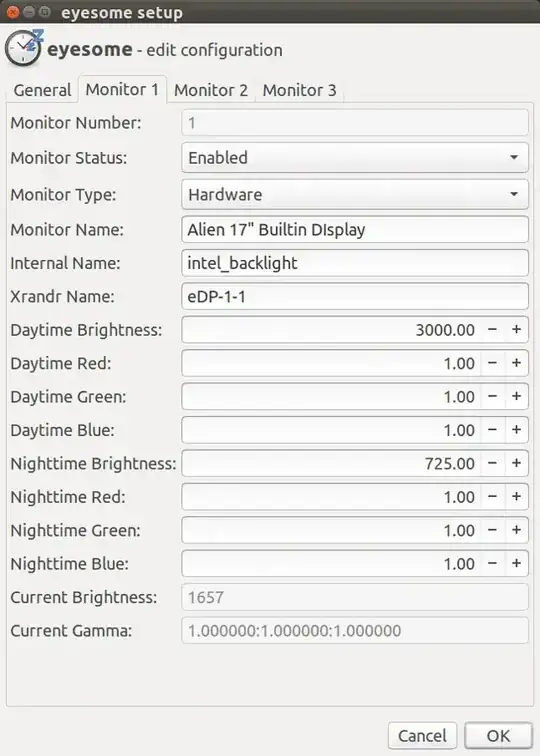
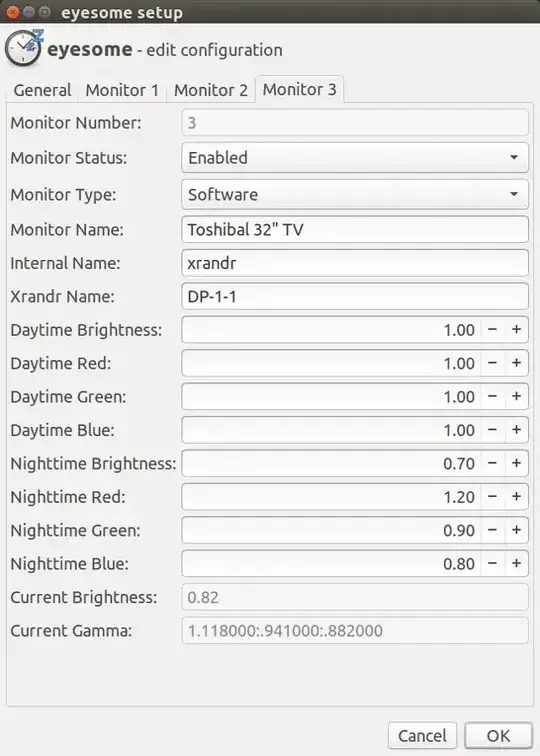
Reply to comment Color Temperature to Gamma
The new version has a Color to Gamma conversion table (bash syntax):
# Red Green Blue Color Temperature
GammaRampArr=( 1.00000000 0.05181963 0.00000000 500 \
1.00000000 0.18172716 0.00000000 1000 \
1.00000000 0.42322816 0.00000000 1500 \
1.00000000 0.54360078 0.08679949 2000 \
1.00000000 0.64373109 0.28819679 2500 \
1.00000000 0.71976951 0.42860152 3000 \
1.00000000 0.77987699 0.54642268 3500 \
1.00000000 0.82854786 0.64816570 4000 \
1.00000000 0.86860704 0.73688797 4500 \
1.00000000 0.90198230 0.81465502 5000 \
1.00000000 0.93853986 0.88130458 5500 \
1.00000000 0.97107439 0.94305985 6000 \
1.00000000 1.00000000 1.00000000 6500 \
0.95160805 0.96983355 1.00000000 7000 \
0.91194747 0.94470005 1.00000000 7500 \
0.87906581 0.92357340 1.00000000 8000 \
0.85139976 0.90559011 1.00000000 8500 \
0.82782969 0.89011714 1.00000000 9000 \
0.80753191 0.87667891 1.00000000 9500 \
0.78988728 0.86491137 1.00000000 10000 \
0.77442176 0.85453121 1.00000000 10500 \
)
# Temperatures of 500 & 10500 are not allowed. Provided for looping min-max.
Reply to comments 2
This question was asked today:
Is it possible to manually set eyesome to always run ? Regardless of
time. Also, is it possible to disable internet connection? Because if
it set to be always on, then there is no need to retrieve location
from the internet. Moreover, I don't like apps retrieving my location
or having access to the internet if they don't need to
You can forego using internet to get sunrise/sunset times with these commands:
sudo echo "7:00 am" > /usr/local/bin/.eyesome-sunrise
sudo echo "9:00 pm" > /usr/local/bin/.eyesome-sunset
Change the time appropriately. I'll look at changing the software in the next upgrade to make this easier.
Please note eyesome doesn't retrieve your location. You're merely keying your city name into the screen and it's stored on a configuration file on your disk. You aren't keying in your IP address or longitude / latitude like Redshift, Night Light or F.lux. BTW your city name is already known to every website you visit because they know your ISP Service Provider's city. Unless you are using a VPN of course.
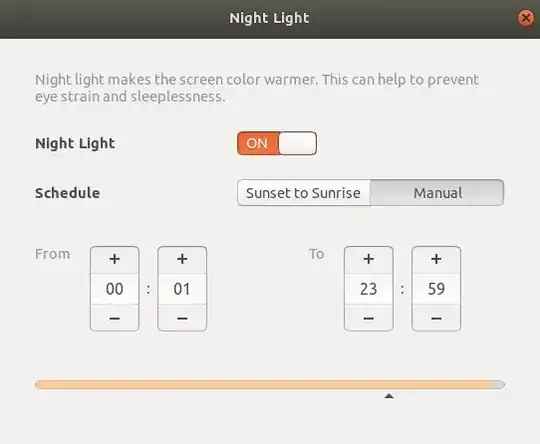
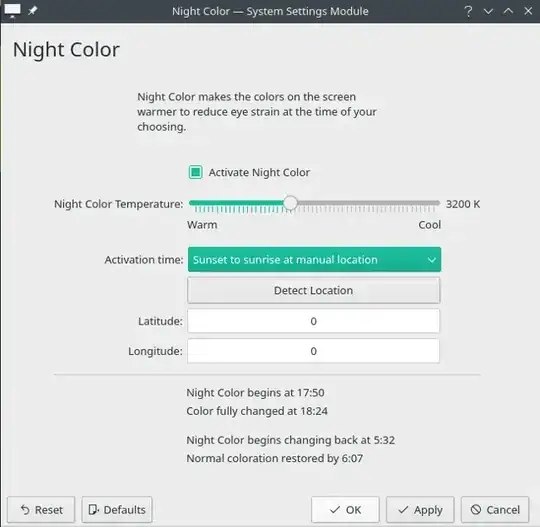

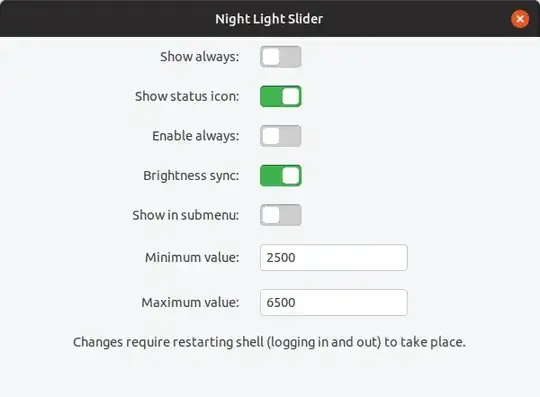




intel_backlightset to 850 at night and 3500 at day (where 0 is off and 7500 is max brightness. This varies by backlight manufacturer and model). Also your KDE doesn't say how many K is on the left, only on the right. For my system I use color temperature of 3500 K at night and 6500 K during the day on 4K TV but not as drastic on Sony TV which has better ambient light control. The laptop display is more like 4500K during night and 6500 K temperature during day. None of your packages control 3 monitors independently I might add. – WinEunuuchs2Unix May 28 '20 at 22:57